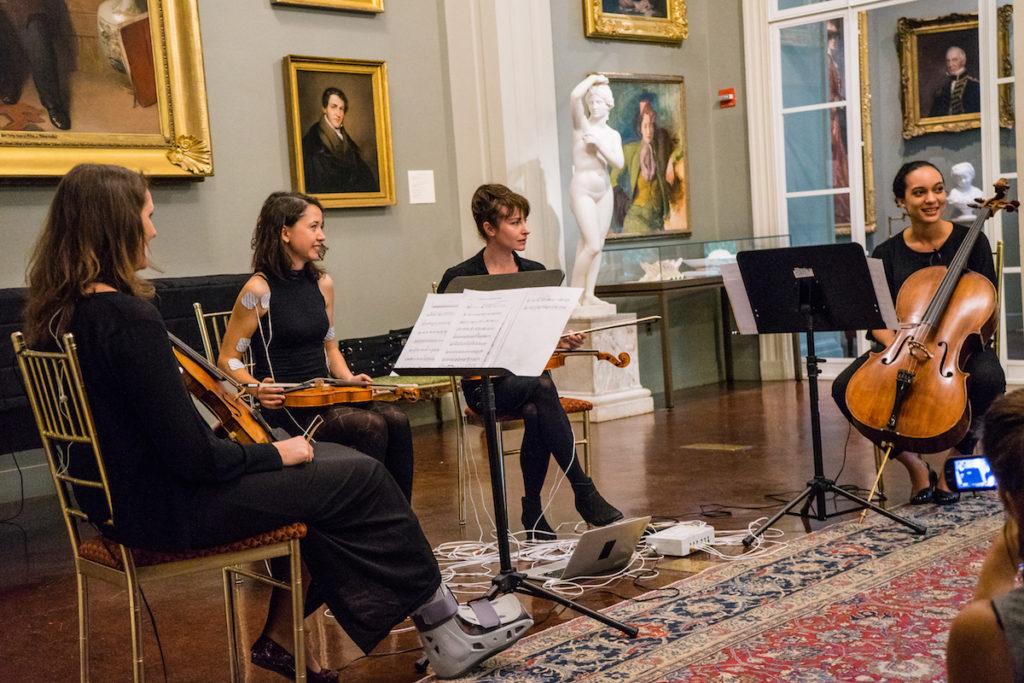By Glenn Billman, news correspondent
Artist Michaela Davies’ arm rapidly jerked her bow across her viola, repeating the same short note again and again. These jolts were involuntary movements caused by electronic muscle stimulation (EMS): While Davies does not know how to play the viola on her own, dozens of wires forced her to. Accompanied by Ozden Sahin, also under electronic stimulation, and two classically trained musicians, Davies performed “Untitled for Cyborg Quartet” for her multimedia project, “Sound Politics,” Sept. 30 at the Boston Athenaeum.
“Sound Politics” was one of more than 180 events hosted by ArtWeek Boston from Sept. 30 to Oct. 9. ArtWeek, a bi-annual ten day event organized by Highland Street Foundation and the Citi Performing Arts Center, features performances across the Boston area.
“Because the performers are controlled by EMS, the performance is speaking to the conflict between control and aspiration for freedom,” Lanfranco Aceti, event curator and director of arts administration at Boston University said. “So it’s looking very much towards contemporary society where the internet, and any form of wires that surround us, visible and invisible, actually shape, control and determine our behavior.”
As a professional psychologist, Davies was aware that EMS could be used to control movements by bypassing the brain and delivering signals directly to the muscles. Davies customized the EMS machine herself and wrote the score for “Untitled for Cyborg Quartet” in collaboration with Kyle Sanna. Her intention was to question the role of control in music and society.
“I don’t believe in free will, and I look for ways to explore that idea that we have no free will,” Davies said. “It’s looking at those ideas around control and literalizing aspects of control in our society that go all the way up.”
The manifestation of this loss of freedom was jarring for some audience members, like painter Dana Kotler.
“It’s quite shocking to see something we do all the time so literally represented, and now it’s scary,” Kotler said.
For Davies, part of the allure of working with EMS is the ability to artificially extend human capability. While she and Sahin have no experience playing their respective instruments, they were able to play faster than the classically trained cellist and violinist who accompanied them.
At the climax of the piece, the physical manipulation Davies and Sahin became stronger and the only conscious movement either artist was able to make was hold on to their instruments while their limbs jerked violently. At one point, the force of the electronic stimuli was so great it caused Davies’ arms to strike her in the face while she played. Though the strength of the EMS during this sequence is painful for the artists, Aceti finds the resulting chaos poetic.
“What I love about [“Sound Politics”] is when you start to see the struggle of the body, because you see that the mind of the artist performing and the body are sort of separated,” Aceti said. “It is like being trapped in a body you cannot control. It is the sound of the last stand of the body against political control.”
Photo by Lauren Scornavacca









